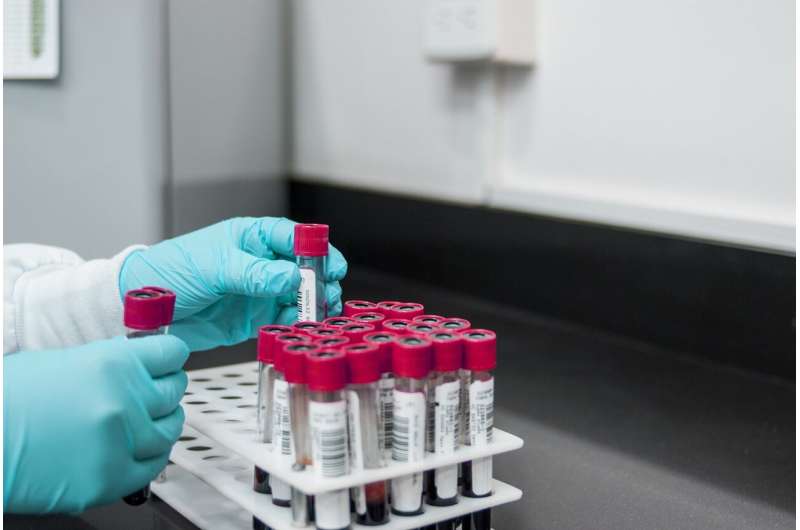September 19, 2023 report
This article has been reviewed according to Science X's editorial process and policies. Editors have highlighted the following attributes while ensuring the content's credibility:
fact-checked
peer-reviewed publication
trusted source
proofread
Biopsy-free diagnosis of celiac disease in adults shows promising results

Researchers from the University of Salerno, Italy, have found that a simple blood test for tTG-IgA concentrations could be used as a diagnostic threshold in predicting duodenal villous atrophy, a hallmark of celiac disease.
In their paper, "Serum anti-tissue transglutaminase IgA and prediction of duodenal villous atrophy in adults with suspected celiac disease without IgA deficiency (Bi.A.CeD): a multicentre, prospective cohort study," published in The Lancet Gastroenterology & Hepatology, the researchers detail the findings of the study conducted on a cohort with suspected celiac disease and compared the diagnostic ability of blood serum thresholds with endoscopy biopsies.
After exclusions, the study cohort consisted of 436 participants, with 296 (68%) women and 140 (32%) men. The minimum age of the participants was 18, with an average age of 40 years. The participants were recruited from various parts of the world, with the majority coming from Europe (305), followed by smaller numbers from Asia (64), Oceania (7), and South America (60).
Participants were categorized into three groups based on their clinical presentation of symptoms, such as anemia, weight loss, or diarrhea (indices of malabsorption), symptoms other than the classical ones, and participants with suspected celiac disease based only on a family history of celiac disease or the presence of associated autoimmune diseases.
Local pathologists at 14 sites processed duodenal biopsy specimens from endoscopy and performed histological assessments. Serum tTG-IgA measurements were obtained from both local and central laboratories.
A threshold was set as 1 x the upper limit of normal (ULN) for tTG-IgA and defined as positive when the result was greater than 1 times the ULN.
Three hundred sixty-three participants (83%) had positive serum tTG-IgA. Seventy-three participants (17%) had negative serum tTG-IgA. Among the 363 participants with positive serum tTG-IgA, 341 had positive histology (true positives), and 22 had negative histology (false positives) after review. Seven of the 73 participants with negative serum tTG-IgA had positive histology (false negatives), and 66 had negative histology (true negatives) after review.
Blood tTG-IgA concentrations greater than 5, 10 and 15 times were seen to have more reliable diagnosis prediction power. The researchers suggest that 10 times the ULN may be a useful threshold for clinical diagnosis.
The study confirms that a blood test can be used as a diagnostic tool in adults, mirroring the current clinical diagnosis strategy of "no-biopsy" in diagnosing celiac disease in children.
More information: Carolina Ciacci et al, Serum anti-tissue transglutaminase IgA and prediction of duodenal villous atrophy in adults with suspected coeliac disease without IgA deficiency (Bi.A.CeD): a multicentre, prospective cohort study, The Lancet Gastroenterology & Hepatology (2023). DOI: 10.1016/S2468-1253(23)00205-4
© 2023 Science X Network


















